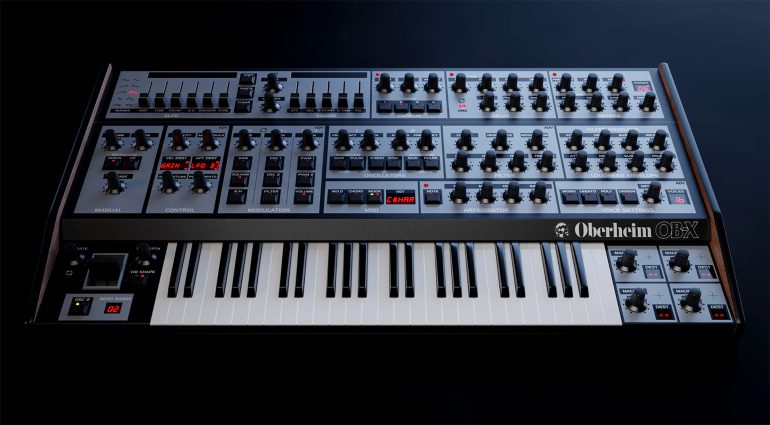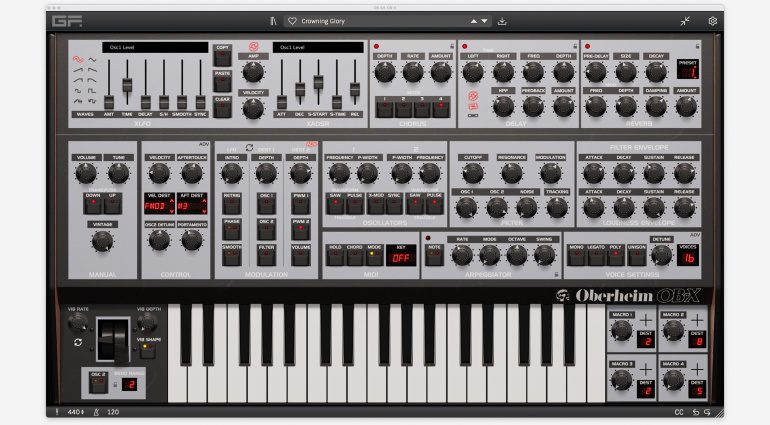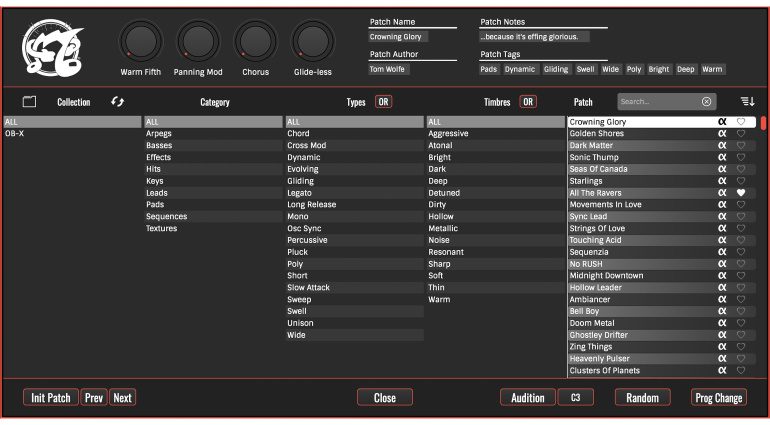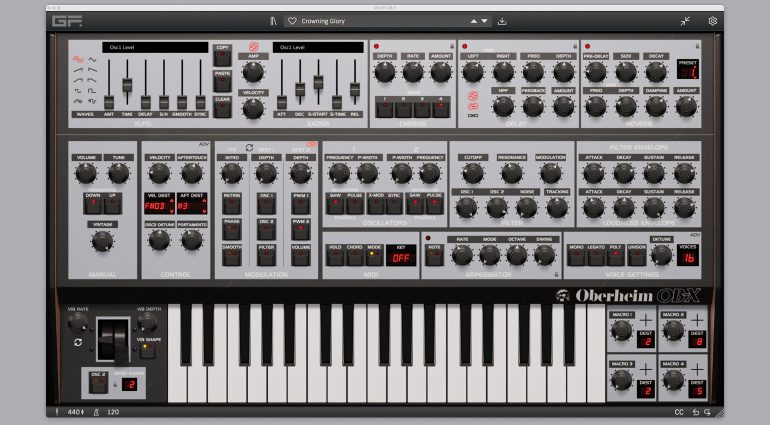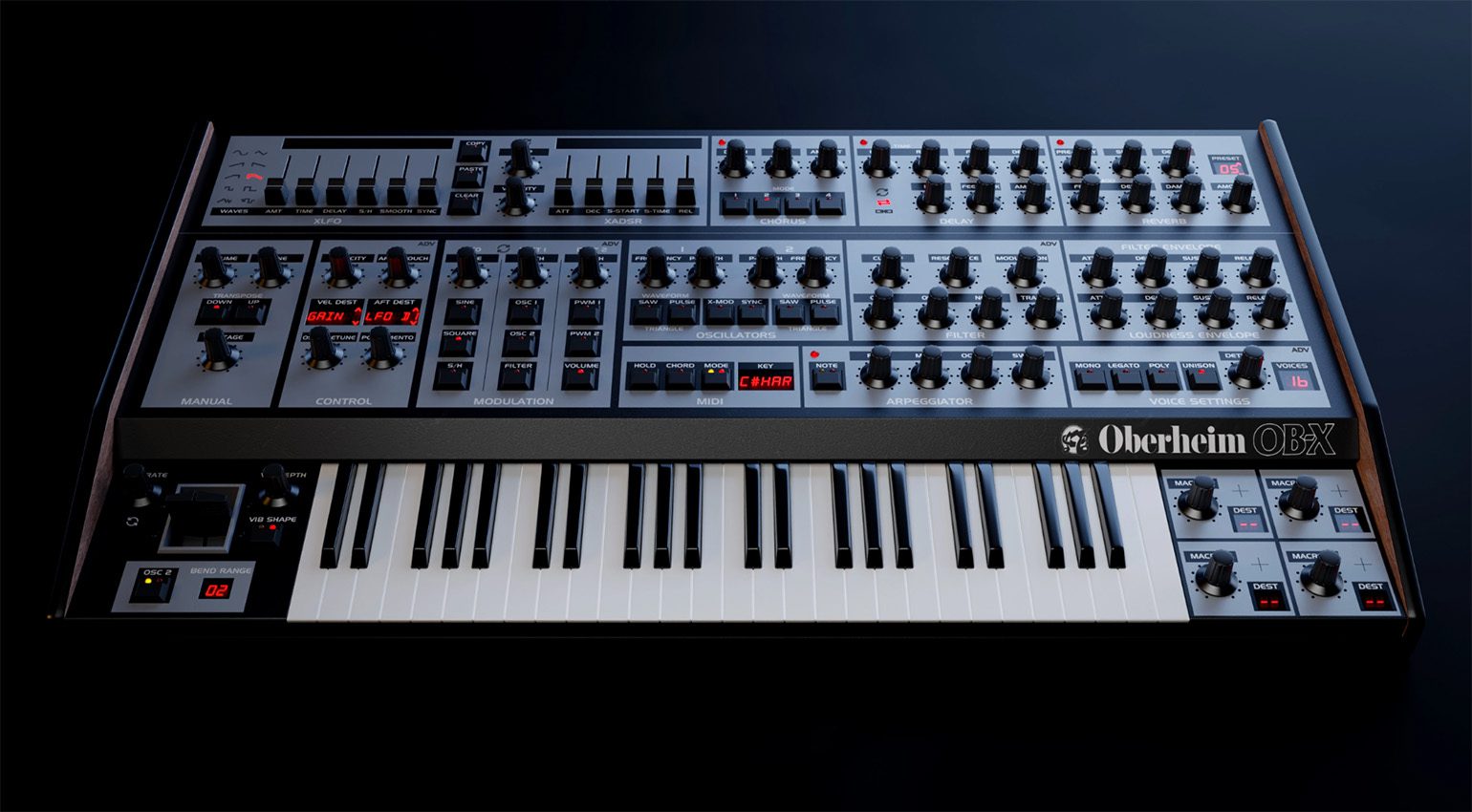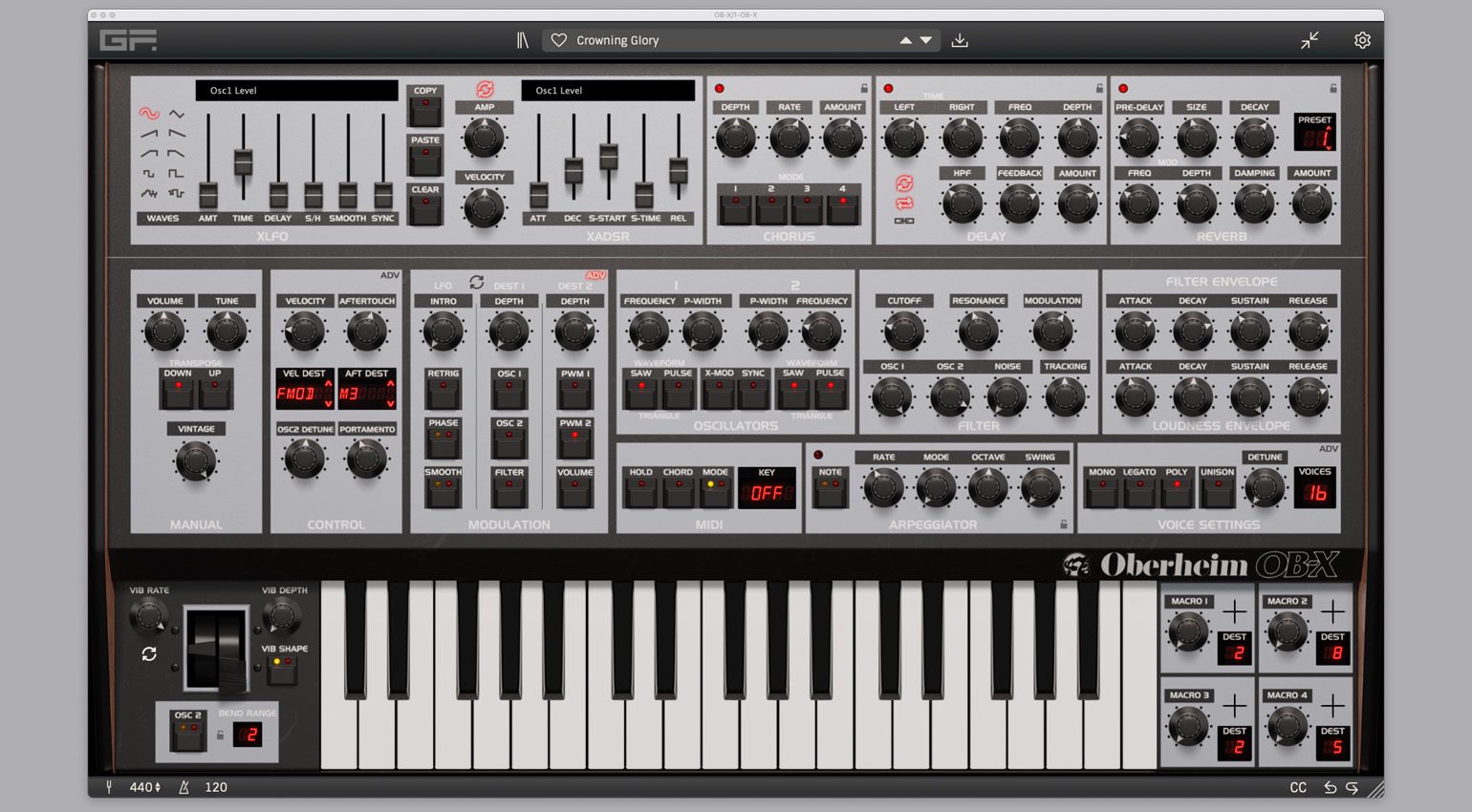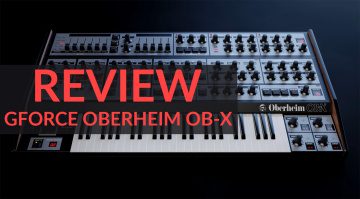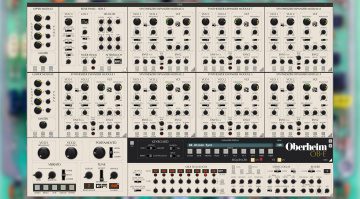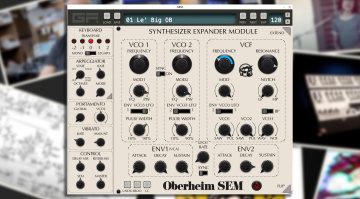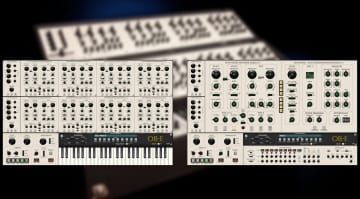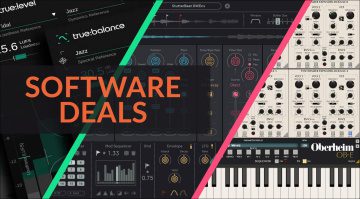GForce Software Oberheim OB-X – The OG OB Poly Reborn
The Oberheim renaissance continues with this officially endorsed rendition of the classic Oberheim OB-X by GForce Software, two companies intertwined by a determination to deliver the finest quality instruments.
As classic polysynths go, the Oberheim OB-X is up there with the greats. This was their first polyphonic synth that didn’t rely on a collection of SEM modules. Introduced in 1979 to square up to Sequential Circuits’ mighty Prophet 5, the OB-X would find favour with the great and the good in contemporary pop music. Prince, Jarre, Madonna, Japan, OMD, Talk Talk, Ultravox, Rush and even Queen were fans. The list is long and star-spangled. That signature Oberheim sound had been condensed onto small circuit boards instead of bulky SEMs. It was available in 4, 6 and 8 voice variants and would spawn sequels in the OB-Xa and OB-8.
The GForce Software Oberheim OB-X
In recent years, Oberheim has returned and the OB-X8 has fast become another classic that embodies all three models in a single unit. and around the same time, GForce Software began releasing faithful software recreations of Oberheim gear. OB-E, their version of the mighty Oberheim Eight Voice was so good, Tom Oberheim endorsed it. That is some accolade and one that meant a great deal to Dave Spiers and Chris Macleod, GForce’s founders. Hot on the heels of OB-E came SEM and today we have OB-X. And just like those previous two efforts, OB-X gets the Tom Oberheim seal of approval. From the first note you play, it is easy to see why.
Effortless Beauty in Design
The GForce Software Oberheim OB-X immediately looks the part with the controls set on pale grey squares that cleanly divide up the various control sections. Buttons and rotaries are familiar, as are the unique pitch bend and modulation paddles. On top of the panel are GForce’s own additions that are now familiar to anyone using their instruments. XLFO and XADSR deliver additional modulation capabilities over the original. An understated but eminently useable effects section gives additional space and breadth to your tones. And four incredibly useful macros sit on the right. These provide single-knob access to a user-defined collection of functions.
There is a beautiful simplicity to the OB-X user interface. The original hardware had it and so does the GForce version. Their 21st-century additions do not look out of place and even though the original didn’t have any LED displays, the design uses complementary visuals that look completely fitting.
That Classic Oberheim Polysynth Sound
Enough about how this looks. How good does it sound? Well, it’s an Oberheim-endorsed instrument so it sounds just like an OB-X sounds. I mean, Tom would not put his name to something that didn’t. Plain and simple. The Oberheim sound is there in all its glory. That big, rounded, harmonious tone is immediately obvious, as are those full-range and crystal-clear sounds that cut through a mix like no other. This is, unquestionably, an Oberheim. This has clearly been created by people who are intimately familiar with an OB-X. It has also been coded by people who know exactly how to recreate a vintage synthesizer in software. It positively oozes authenticity.
If you’re after the minty fresh sound of a 1979 OB-X, as it was, straight out of the box, then dial that Vintage knob to 0%. But if you’re after something that has mellowed with age in a slightly disgraceful way, just dial that decrepitude in and wallow in the subtle imperfection of ageing transistors and bulging caps!
21st Century O’Boy
Accurately recreating a vintage synth in software is one thing. Making it relevant for a present day audience is another. GForce are masters of striking the right balance and OB-X is no exception. As previously mentioned, the XLFO and XADSR features seen in other GForce instruments are included here. This elevates modulation capabilities well above the original in a very respectful manner. The effects section carries this tradition on. As before, the chorus, delay and reverb sit perfectly between “just enough” and “sublimely excellent”. They complement rather than overtly exaggerate. That is to say, they are inoffensive yet impactful. Aftertouch and velocity can be routed to a wide and useful array of destinations.
Unlike the original, this version of OB-X can stretch up to 16 voices of polyphony, but this can be dialled down to suit those who want an authentic experience. Other features include discrete tracking and levels, separate PWM1 & 2, a chord mode with scaler and modulate-able panning of 8 pairs of voices. A simple but effective arpeggiator is included and there’s a really nice unison mode that makes this big synth sound massive. Spread the detune for a proper wow factor.
OB-X comes with over 400 presets from some superb sound designers and all of these are accessed via the now customary GForce preset browser which I have waxed lyrical about before. The overall UI is fully scalable and there are some useful tools built into it that allow you to lock down certain panels to prevent accidental changes or to reveal advanced features, thus keeping the UI clean and uncluttered.
In Conclusion
I struggled to find anything wrong with OB-X. In fact, the only thing I could possibly pull it up on is the size of the on screen keyboard. It’s only three octaves wide. What negative impact does it have on the use of OB-X? None. None whatsoever. It just looks a bit small. That’s it. OB-X delivers a perfect recreation of the original hardware. The simplicity of the original’s UI is replicated here and I’d have no qualms putting this in front of someone new to synthesis altogether. They’d be making great sounds within minutes.
Why would you buy this OB-X recreation over any other that is available? Quite simply, this one is approved by Tom and, in my humble opinion, the best sounding one out there.
More Information
The GForce Software Oberheim OB-X is available at a limited introductory price of £59.99 + VAT. After the introductory offer, it will be £99.99 + VAT. An Oberheim Bundle is available for an intro price of £169.99 + VAT (normally £249.99). Existing owners of the GForce Oberheim Bundle can upgrade for £39.99 + VAT.
OB-X is available as an AU/VST/VST3/AAX plugin and standalone version for Mac and PC
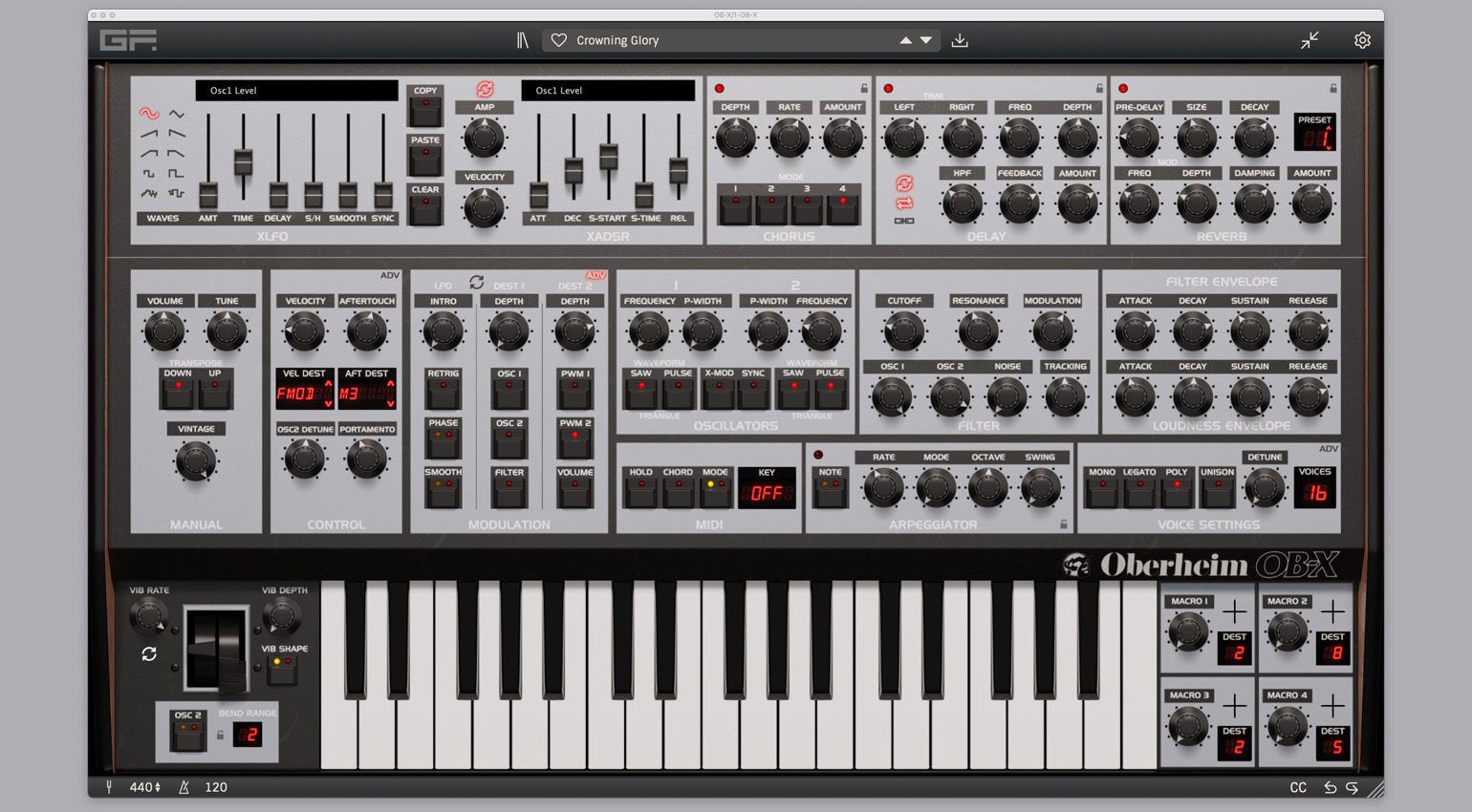
You are currently viewing a placeholder content from YouTube. To access the actual content, click the button below. Please note that doing so will share data with third-party providers.

 4,9 / 5,0 |
4,9 / 5,0 | 